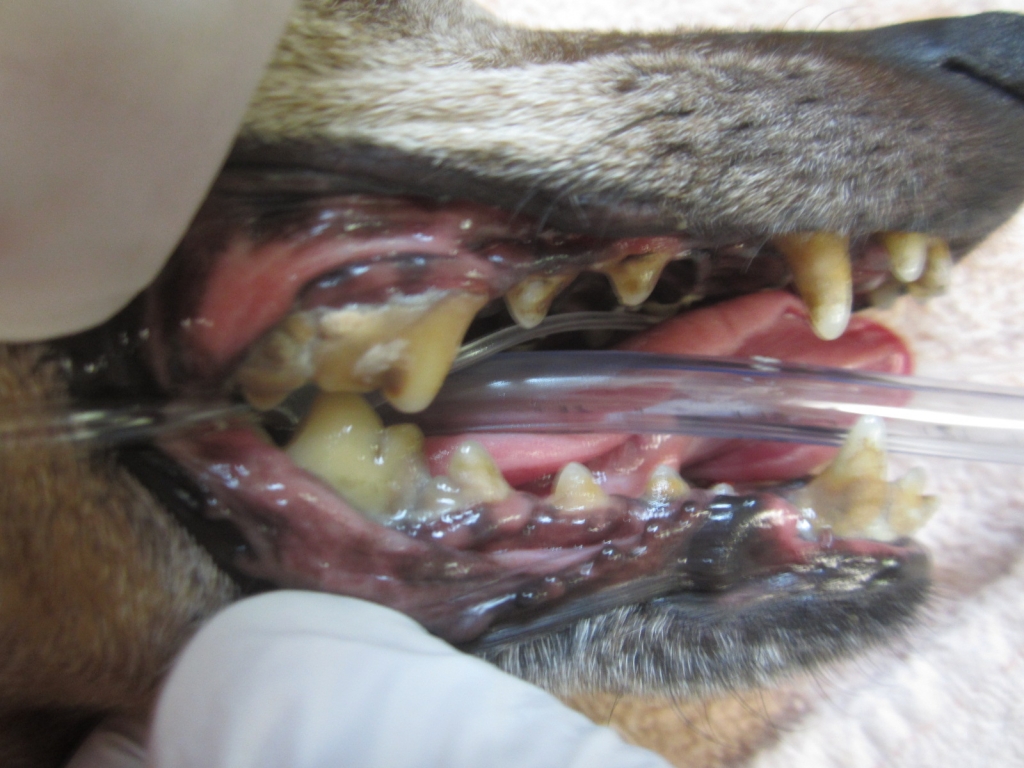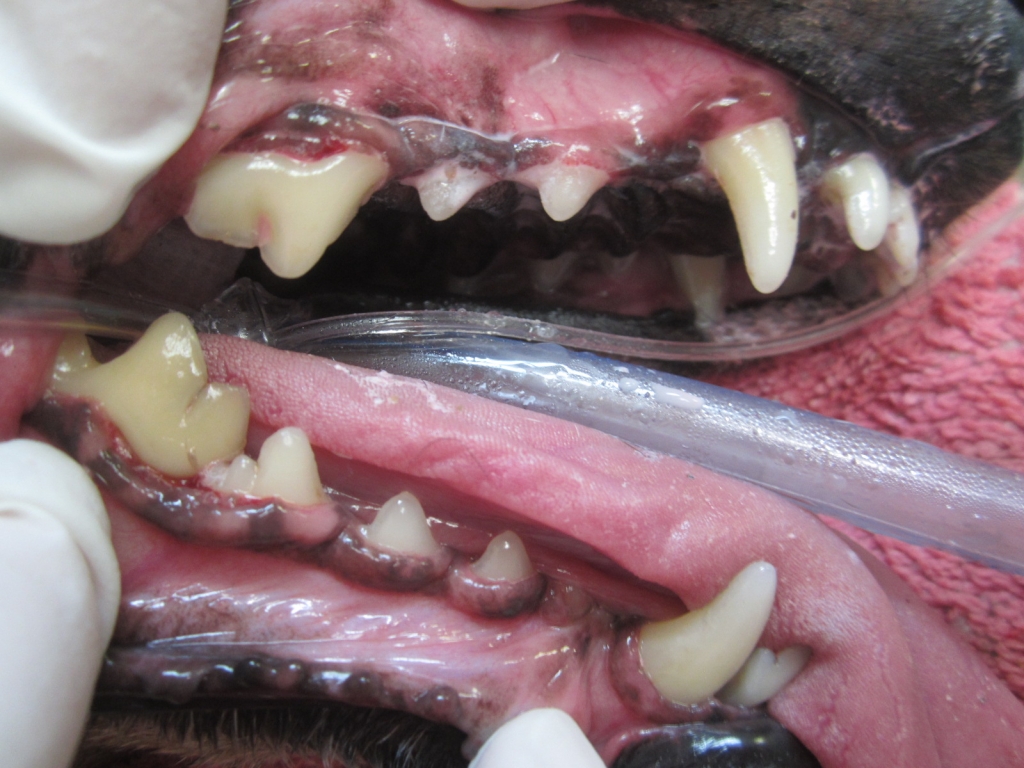Periodontal disease is a PAINFUL condition and the most common problem occurring in adult dogs and cats, and is entirely preventable. By three years of age, 80% of dogs and 70% of cats have periodontal disease. Small or toy breed dogs and brachycephalic breeds (ex. Shih Tzu, Boxer) have a higher incidence due to the unique problems caused by the shape of their face.
Because animals are programmed to hide their pain, bad breath is one of the few signs of the disease noticeable by the owner. Unfortunately, the common response by the owner is that dog/cat breath is just a normal part of pet ownership. Bad breath is never normal and indicates some form of periodontal disease. The result of ignoring bad breath in our pets is the under-diagnosis and under-treatment of periodontal disease.

This 15 year old patient had severe tartar build up and red, swollen gums that bled easily. The creamy, gray substance at the gum line is pus. We commonly hear that a pet’s mouth cannot possibly hurt because the pet is still eating. This dog was eating just fine, but this degree of infection is most certainly agonizing. This level of oral infection had contributed to an earlier severe kidney infection that was nearly fatal.

The teeth were cleaned on all surfaces. Ultrasonic and hand scaling were used. Instruments were used under the gum tissue to clean the tartar build up there. The tooth surfaces were polished with pumice. The teeth look great now!!! Except… Any hospital that does not do a tooth by tooth inspection and full mouth x-rays would have missed the 15 teeth that were diseased beyond saving.

Dr. Reilly first had to surgically remove the teeth and evacuate the pus from the nasal passages. Without careful planning for the closure of the gum tissue over the defects, the oronasal fistulas will not heal and will leave a permanent hole between the nose and the mouth. Our doctors have received special training in the repair of oronasal fistulas. Dr. Reilly was able to repair both sides successfully as well as extract the remaining diseased teeth.
THE GOOD NEWS!!!
Daily home care and routine (every 6-12 months) oral health assessments and treatment can reduce or even eliminate the periodontal disease risk!

